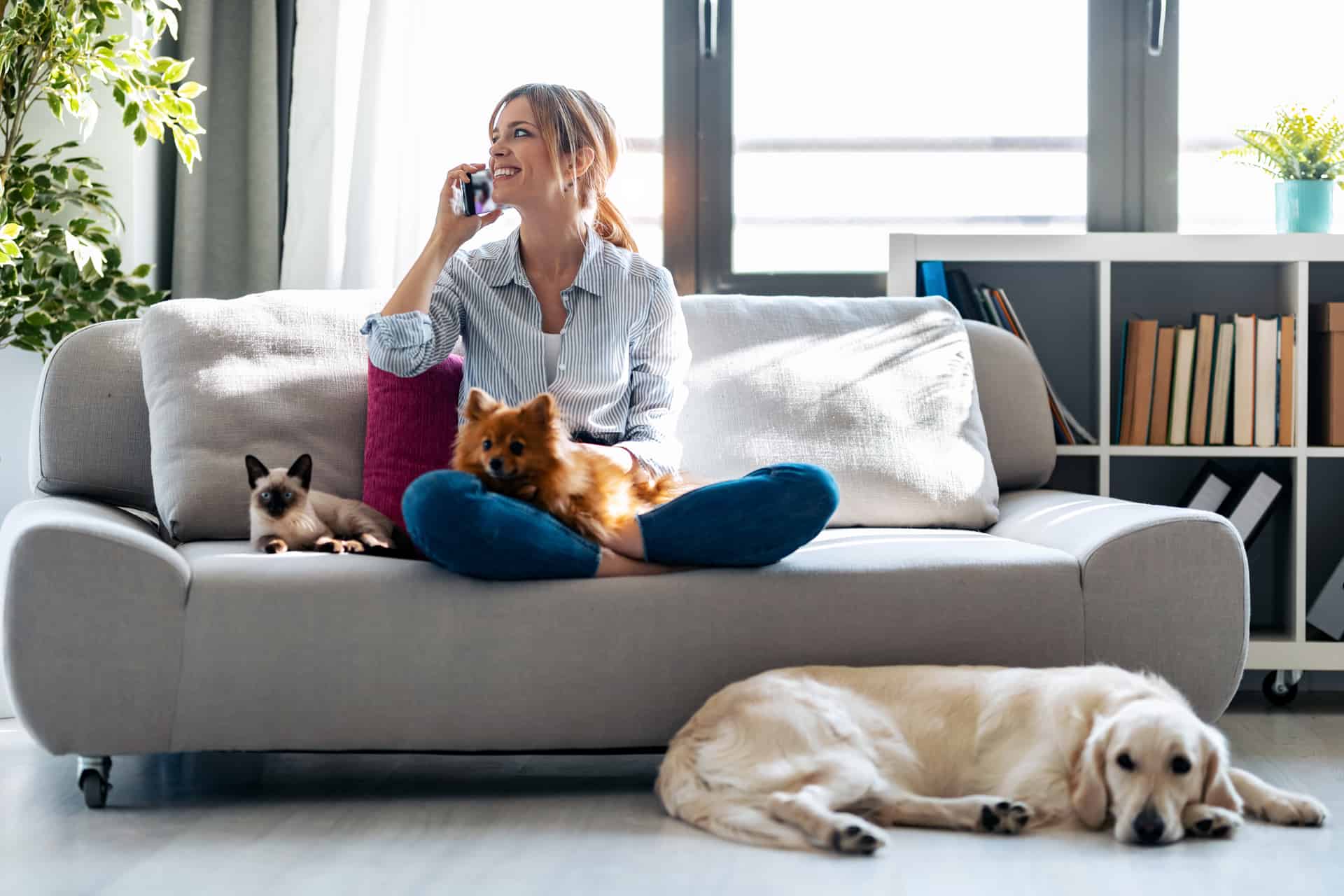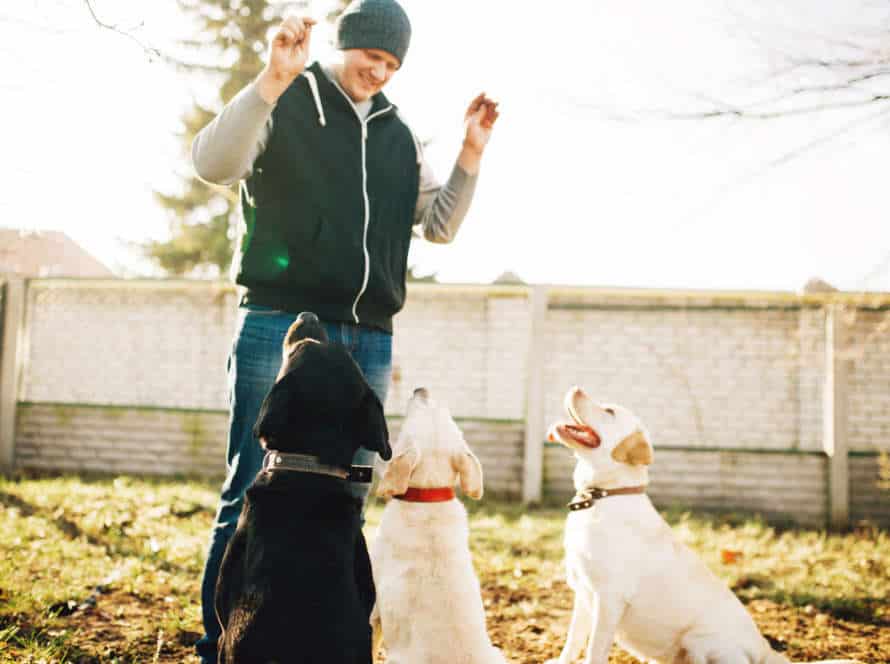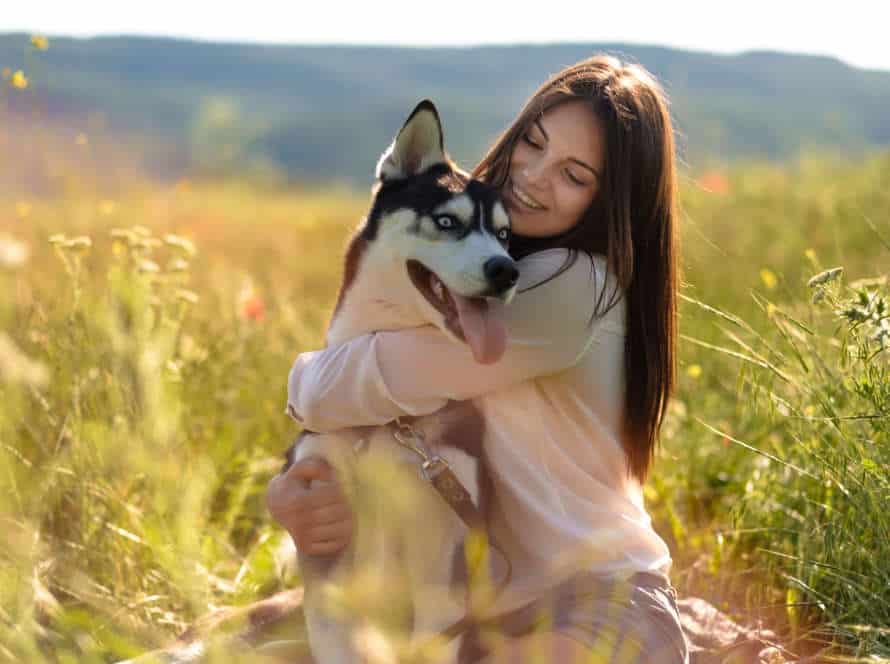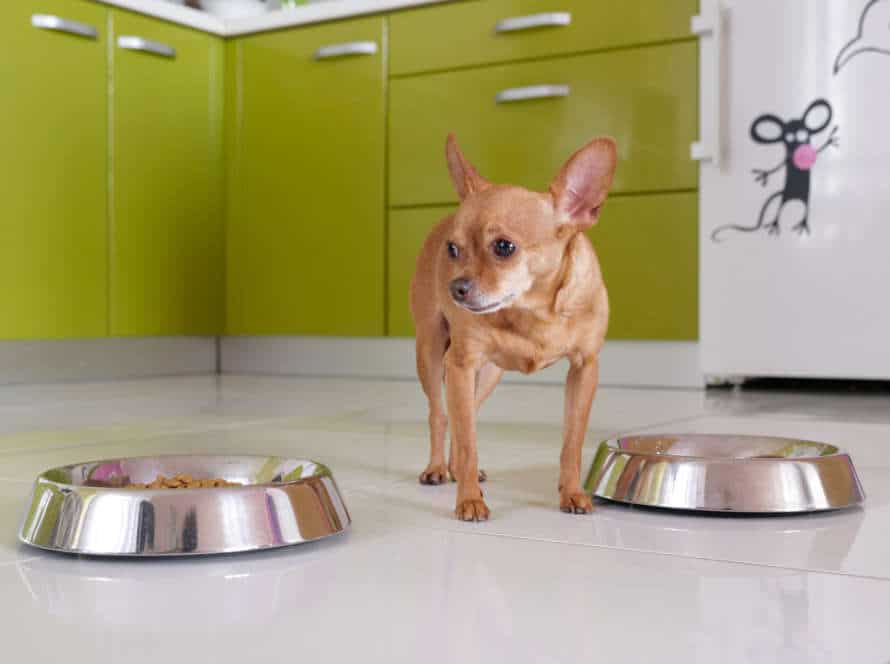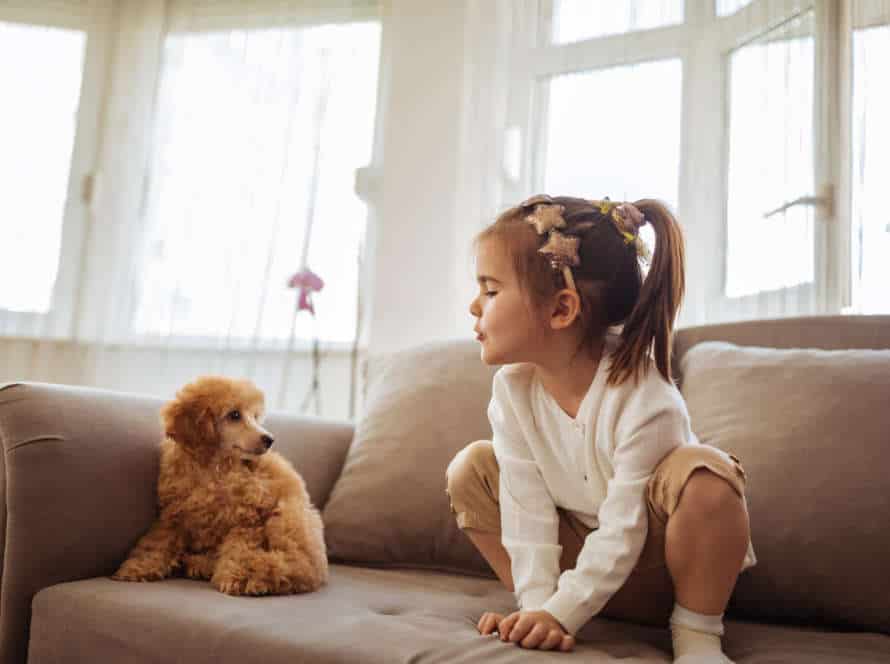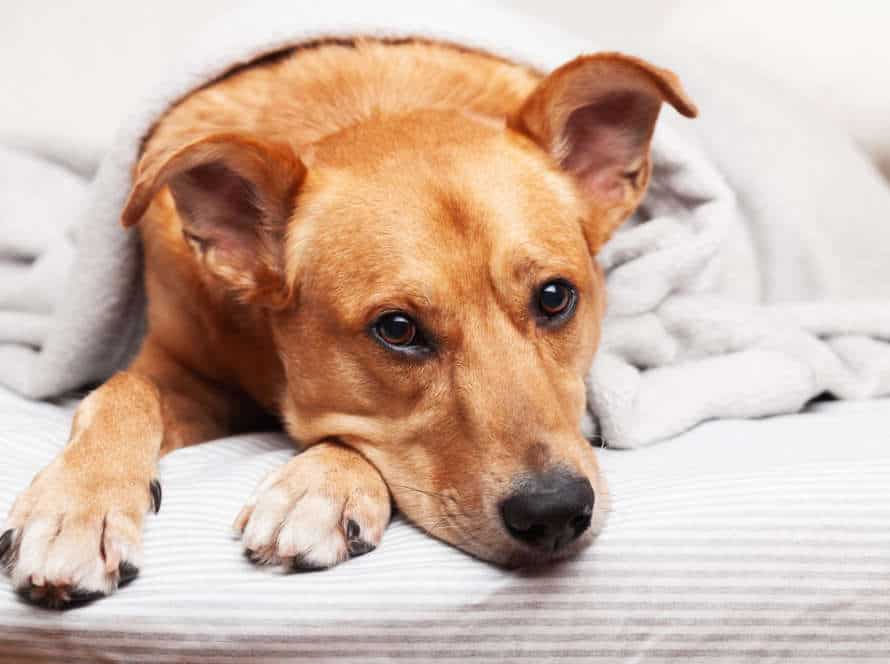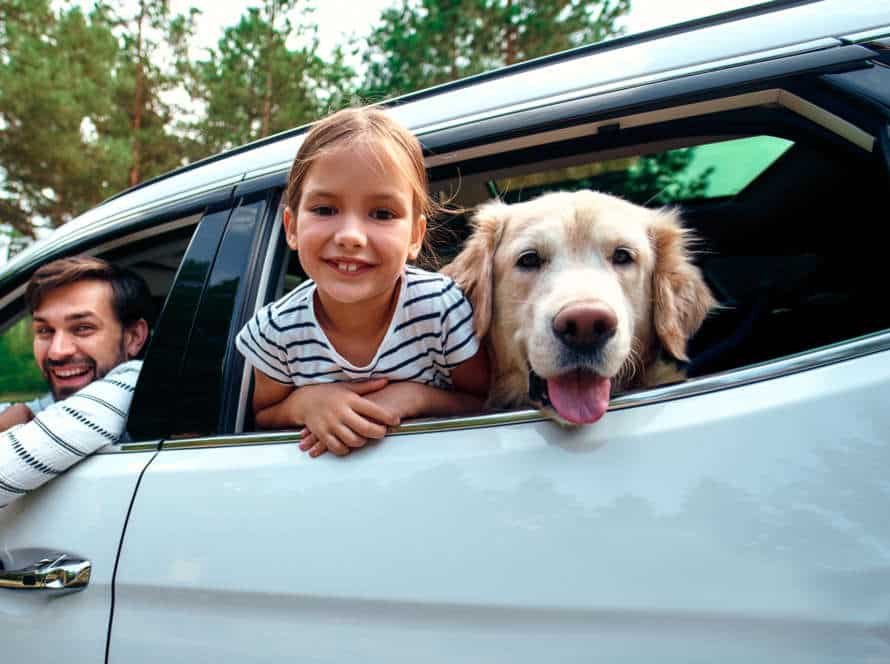Setting the Stage for Success: Preparing Your Home for a New Dog
Bringing a new pup home can be super exciting. But it can also be overwhelming. Here are some tips to get ready:
- Create a Space: Make a spot in your home where they feel safe. Put in a bed, toys, and easy access to food and water.
- Remove Hazards: Puppies and even adult dogs can be curious and destructive. Get rid of power cords, sharp objects and toxic plants that could hurt them.
- Get Supplies: Buy food, water bowls, a leash, a collar and ID tags.
- Set Rules: Decide on house rules like where they can go to the bathroom, sleep and what areas are off-limits.
- Plan for Training: Spend time training your pup and use positive reinforcement techniques.
Bringing a new pup home takes preparation, patience and love. With these tips, you can make their home a loving one.
Prepping Your Home
Gearing up for your pup? Get ready for their arrival by getting the right supplies! Make sure your home is safe and secure. And be aware of any changes a new pet may bring. To get your home prepped, consider these steps:
- Purchase supplies
- Check security measures
- Be prepared for changes
Designating a Space for Your Dog
Setting up a spot for your pup is key when bringing home a new furry pal. It not only gives them a place to relax, but also helps with potty training and naughty behavior. Here are some tips:
- Choose a spot in your house that’s easy to clean and accessible for your dog.
- Put in a pet gate or crate to make a specific area.
- Make sure the space is the right size – not too small, not too big.
- Add a comfortable bed, water bowl, and toys to keep them occupied.
- Train your dog to link the space to good experiences.
- Gradually give more space as they get used to it.
Securing Your Home and Property
Bringing a new pup home is an exciting event! But, it’s crucial to prep your house to keep everyone and everything safe. Here are some tips to secure your house and property before your new dog arrives:
- Safety check: Identify and repair any potential risks like loose electrical cords, toxic cleaning supplies, or sharp objects which could hurt your pup.
- Install pet gates: Put pet gates to section off certain areas of your home, and to keep your pup away from restricted spots like the kitchen or basement.
- Secure the yard: Look over the fencing in your yard and patch up any holes or gaps your pup can escape through. Lock the gates and think about installing a fence extension to stop jumping.
- Designate a space: Pick out a certain area for your dog’s food, water, bedding, and toys to help keep your house tidy and uncluttered.
By following these steps, you can build a safe and welcoming place for your new furry buddy!
Removing Hazards and Breakables
Before welcoming a pooch to your home, it’s essential to ready your space. Remove any hazards and breakables to keep your pup safe. Here are some tips:
- Inspect for potential risks like chemicals, sharp objects, and small items that can be swallowed. Store them safely away from your doggo.
- Check for fragile decor, vases, and fine china that may be knocked over. Move these items to a higher spot or place more securely.
- Secure loose wires and cords so your pup won’t chew and get hurt.
- Keep toxic houseplants away and consider pet-friendly ones.
- Cover gaps or holes in your fence, so your pup won’t escape.
By taking these steps, you can create a safe and cozy environment for your pup.
Gathering Supplies
Welcome new pup home! Essential to create a safe, comfy, fun environment. Gather the right stuff. It’s important. Let’s look at what you’ll need. Ensure pup has everything they need.
Essential Items for Your Dog
Adopting a dog is exciting and rewarding! Be ready by gathering these six essentials:
- High-quality food. Pick a brand that fits your pup’s breed, age, and activity level.
- Bowls for water and food. Get sturdy, non-toxic bowls.
- Collar and leash. Buy a comfy, adjustable one so your pup is safe on walks.
- Dog bed and crate. Create a comfy space for rest and sleep, and a crate for training.
- Chew toys. Stimulate natural chewing and prevent destructive behavior.
- Grooming supplies. You’ll need shampoo, brush, nail clippers, and more to keep your pup clean and healthy.
Pro tip: Plan in advance for your pup’s routine. This includes playtime, exercise, training, and vet visits. That way, you and your furry pal can have a stress-free transition!
Comfort Items for Your Dog
When preparing your home for a pup, think about getting comfort items to make them feel at ease. Here are some must-haves:
- Dog Bed: Pick a tough, washable bed that fits your pup’s size and sleeping style.
- Food & Water Bowls: Get high-quality and non-slip bowls that are easy to clean.
- Toys: Get toys that are safe and suitable for your pup’s breed and size. Choose interactive, chew and comfort toys.
- Crate/Kennel: Get a size-appropriate crate with a soft cushion.
- Blankets/Towels: Provide blankets and towels for your pup to snuggle up and sleep.
By getting these comfort items, you’ll make a new pup feel welcomed and cozy in their new home.
Preparing Your First-Aid Kit
Having a stocked first-aid kit for your home is essential. You must be ready for any medical emergency with humans and dogs! Here are items to keep in your kit:
For humans:
- Gauze pads of different sizes.
- Adhesive bandages of different sizes.
- Antiseptic wipes or solution.
- Tweezers, scissors.
- Disposable gloves.
For dogs:
- Non-stick bandages, gauze, tape.
- Hydrogen peroxide (for vomiting if needed).
- Styptic powder (for nail cuts).
- Digital thermometer.
- Eye dropper/syringe (no needle) to give medication.
By stocking up with these supplies, you will be ready for any medical emergency with humans or furry friends.
Developing a Routine
Getting a new pup is thrilling, yet tricky for any pet owner. To make the transition easier for everyone, there are essential steps to take. An essential step is making and following a daily routine. By setting up a routine from the start and sticking to it, your pup will know what’s expected of them. This will also make them feel more relaxed and secure in their new home. Plus, it can reduce stress for the owner. Let’s explore some ways to create a routine for your pup.
Setting a Feeding Schedule
Creating a feeding schedule is key for your pup’s routine. Here’s what to remember:
- Work out how many meals they need based on age and activity.
- Decide on a certain time of day to feed them and stick to it.
- Measure the food accurately – not too little, not too much.
- Provide fresh water always. Maybe add to their dry food to avoid dehydration.
- Don’t feed them before or after exercise – this can cause tummy troubles.
A consistent schedule and healthy diet make for a happy pup in their new home.
Establishing a Bathroom Routine
Creating a bathroom routine is super important when you get a new pup. Dogs love routine, and having one will help your pooch feel comfy and stop accidents from happening. Here’s how to do it:
- Set a regular feeding schedule – After eating or drinking, dogs usually need to go pee 20-30 minutes later. So, have a solid feeding plan and regular bathroom breaks.
- Take your pup outside often – Take them out regularly, especially after they wake up or play. This stops messes indoors.
- Reward good behaviour – When your pup pees outside, reward ’em with treats, compliments, or playtime. This builds good habits and motivates them to repeat it.
Pro Tip: Be patient – It might take a while to make a routine, but stay consistent and use lots of positivity and your new pup will get it in no time!
Creating an Exercise Plan
Certainly! Here’s the text:
The benefits of regular exercise are well-known. From reducing the risk of chronic disease to improving mental health, staying active is key to leading a healthy life. But did you know that exercise can also improve your sleep quality? According to numerous studies, physical activity can help you fall asleep faster and enjoy deeper sleep cycles, which can help you wake up feeling refreshed and energized. So if you’re looking for another reason to lace up your running shoes or hit the gym, consider the benefits to your sleep!
Consulting a Veterinarian
Essential: Getting ready for a new pup? Take the necessary steps!
Meet with a vet. They are full of great advice. What kind of dog? What to feed? Grooming? They’ll tell you. Plus, they can show you how to create a safe home for your new pet. Don’t forget vaccinations either. Ask all the questions you have.
Choosing a Veterinarian
Picking the perfect vet for your pup is a big deal. Here are some things to think about:
- Credentials: Ensure they have a license, repute and proper training.
- Location and availability: Go for one nearby and available when you need them.
- Services: Check if they provide what your doggo needs, like preventive and emergency care.
- Communication: They should be easy to talk to, answer your queries and explain procedures plainly.
Once you’ve chosen your vet, get ready for your pup! Puppy-proof your home, buy supplies and make a safe and comfy spot.
Arranging for Your First Appointment
Organizing your first vet appointment is essential for your pet’s wellbeing. Here are some tips to make the most of it:
- Gather all medical records, conditions and medications.
- Make a list of questions.
- Be ready to give info about diet, exercise and behaviour.
- Arrive on time with your pet on a leash or carrier.
- At home, create a safe and pleasant environment. Dog-proof your house and provide a special area for your pet to sleep and play. Buy things like a leash, collar, food and water bowls.
Pro-tip: Regular visits to the vet can help detect health issues earlier, giving your furry friend a longer, healthier life.
Discussing Health Concerns with Your Veterinarian
Talking with your vet about your pet’s health is vital for their wellbeing. They are your partner in keeping your furry chum healthy and content. To make the most out of vet visits, try these tips:
- Write down any queries or worries before the appointment.
- Bring any related medical reports or documents.
- Be truthful about your pet’s diet, exercise, and behavior.
- Follow the vet’s advice and ask for more info if needed.
- Don’t be shy to ask questions or raise issues – your vet is there to help.
- Keep in mind that preventive care, such as regular exams and vaccinations, is essential for your pet’s long-term health.
By communicating openly and often with your vet, you can help increase your pet’s quality of life and ward off severe health issues.
Training Your Dog
Training your new pup is essential for its success. Through training, you can build a strong bond and make sure your dog knows what behaviors are expected. Also, it helps your pup learn necessary skills such as leash walking, potty training and more. Here are some hints and advice to make training simpler:
Choosing a Training Method
Choosing the perfect training method for your pup is essential. It prepares your home for a new dog and sets the stage for great results in the future.
Here are the three popular types:
- Positive reinforcement: Reward good behavior and ignore or change bad behavior. It’s the most successful, and creates a strong bond between pup and owner.
- Clicker training: Uses a clicker to mark desired behavior and give a reward. It helps when teaching complex tricks and actions.
- Alpha training: Tries to make the dog obey through dominance or punishment. Not suggested as it can lead to aggressive behavior and weaken the pup-owner relationship.
Pick the method that fits your pup’s personality, the behavior you want, and your lifestyle. Start training your pup quickly and be consistent and patient.
Basic Commands to Teach Your Dog
It’s essential to build a strong bond with your pup by teaching them basic commands. Here are the top 5 and how to prepare your home for your new pet:
- Sit: Move a treat near their nose and up. When they sit, say “sit” and give them the treat.
- Stay: Ask them to sit, then hold up your hand and say “stay”. Step back and reward them if they stay.
- Come: On a long leash, say “come” and pull gently. Praise and reward them when they come.
- Down: Ask them to sit, put your hand on their shoulders and say “down”. Give them a treat when they do.
- Heel: Find a quiet place with no distractions. Walk them on a short leash near your left side. Say “heel” and reward them for not pulling.
Prepare your house for your pup. Buy supplies, create a feeding schedule and pick a potty area. Set rules and boundaries from the start, like which areas of the house are off limits.
Pro tip: Use positive reinforcement and consistency when teaching them new commands for the best results.
Housetraining and Crate Training Your Dog
To set the stage for success when bringing home a new pup, you need to housetrain and crate train them.
Housetraining involves regular potty breaks, rewarding good behavior with treats and reinforcing accidents with positive reinforcement.
Crate training offers a safe space for your pup to relax when you’re not around, avoiding any potential destruction or accidents.
To achieve this, follow these steps:
- Have a consistent routine for potty breaks and feeding.
- Reinforce good behavior with treats, praise and affection.
- Correct bad behavior without punishing.
- Gradually introduce your pup to the crate using positive reinforcement.
- Monitor your pup’s behavior and modify your training as required.
With patience and the right reinforcement, housetraining and crate training can be a positive experience for both you and your dog.
Frequently Asked Questions
1. How can I prepare my home for a new dog?
It’s important to make sure your home is safe and welcoming for your new furry friend. This includes setting up a comfortable bed or crate, puppy-proofing your home, and introducing your dog to their designated potty spot.
2. What kind of supplies do I need before bringing a new dog home?
You will need essential supplies such as food and water bowls, a leash, collar or harness, and toys. Additional items may include a bed or crate, grooming supplies, and training treats.
3. Should I train my dog before or after bringing them home?
It’s best to start training your dog as soon as possible, ideally before bringing them home. This will help establish boundaries and routines early on, making the transition smoother for both you and your dog.
4. How can I introduce my new dog to other pets in my home?
Slow and supervised introductions are key. Start by allowing the pets to sniff each other through a gate or separate room, and gradually increase their time together. Reward good behavior and separate them if any aggression occurs.
5. What should I do if my new dog is not adjusting well to their new surroundings?
Be patient and provide a calm and consistent environment. Consider seeking professional help if your new dog is exhibiting excessive anxiety or aggression, as this may require additional support and training.
6. How can I help my new dog feel welcome in their new home?
Provide plenty of positive reinforcement and attention, and establish a routine to help your dog feel safe and secure. Spend quality time together and offer plenty of love and affection to help your new dog feel at home.

